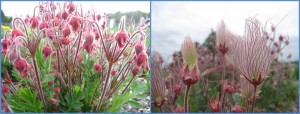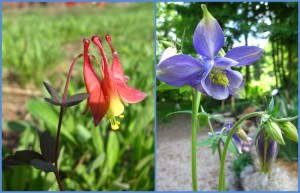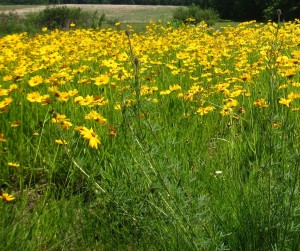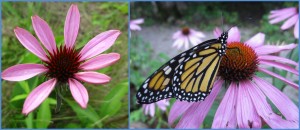Water Less, Relax More
I have always been a fan of “hammock gardening”. That is, loving every minute of gardening but always keeping in mind that time in the hammock is time well spent.
One way to get yourself to this Zen-state of gardening is to plant smart. Plant for your climate and don’t fight with She who knows best: Mother Nature will always win. Instead, go with the flow. Choose plants that are meant to grow here and you’ll find yourself with enough time for that extra round of golf or time to swing away the afternoon between two trees.
Watering…don’t do it
Pouring water over your garden to keep your plants alive during the hot summer months isn’t just time consuming, it’s expensive. While all plants require some water to get started, this list of ten plants will require little to no water once they are established. Some you will know and others you will want to know.

Geum triflorum: prairie smoke
Blooms early spring and puts on quite a show when going to seed. There’s a reason they call it prairie smoke. Great for the driest of soils and will even grow in a rock pile.
Oligoneuron rigidum: stiff goldenrod
Many think of goldenrod as a weed and, indeed, some species are. Stiff goldenrod, however, is the perfect late season flower for all of those late season birds and insects. Insect-pollinated means it actually doesn’t cause allergies so you can’t use that as an excuse anymore!
Aquilegia canadensis: wild columbine
There are a number of columbine hybrids out there but the original is yellow and red. No matter which you choose to add to your garden, your mid to late spring garden will be a stunning attraction for those early pollinators.
Linum lewisii: blue flax
These small blue flowers are the perfect addition to any dry garden. When not in bloom, this plant provides attractive foliage. What I like about blue flax is that, unlike many other plants that thrive in Canada, the flower is actually blue. You won’t find too many others like it. Blooms early summer.
Coreopsis lancelota: lanceleaf coreopsis
A classic. These bright yellow flowers are stunning when planted in large swaths and you’ll have blooms for about two months in mid-summer. A great cut flower as well, I like to bring them in the house to sit on the dining room table.
Helianthus mollis: downy sunflower
If you’re looking for a perennial sunflower with the round sunny face of an annual sunflower, this is it. Growing to four feet, you will attract a plethora of birds as it starts to go to seed. This one is a rhizome spreader, so if you have picky neighbours, best to chat with them about it first. Blooms late summer.
Echinacea purpurea: purple coneflower
Another classic. Everyone knows about the purple coneflower but did you know it’s also a monarch favourite? Long-lasting blooms are a pollinator magnet. Blooms mid-summer.
Monarda punctata: dotted mint
We all know monarda when we see it. This native monarda species looks nothing like that. It is, in one word, weird. With several “layers” of pink and spotted leaves and petals, it’s one of those flowers that will make visitors to your garden stop and ask. Blooms mid-summer.
Gaillardia aristata: blanketflower
The colour combo on the blanketflower is unbeatable: each one displays a slightly different ratio of yellow and red. Nothing says summer quite like Gaillardia. Blooms mid-summer.
Liatris pycnostachya: prairie blazingstar
If you’re not growing blazingstar, you need to join the club. Another monarch favourite, the blooms are not your average daisy-like flower, but, rather, tall purple spikes. Blooms mid-summer.
Sourcing Your Plants
Keep in mind that locally grown plants will always do better. They started here and they are accustomed to the conditions. You really can’t beat it. What you can’t find growing at the garden centre you’ll be able to find seeds for online.







